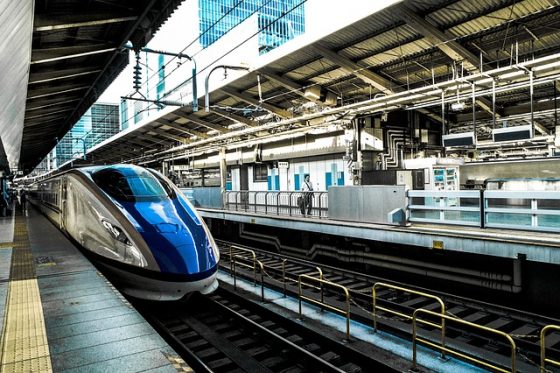In Favour :-
- High-Speed Railways (HSR) in India is going to be a new step towards a technologically advanced nation which would help in the development of infrastructure as well as reduce unemployment.
- India entering into the HSR group would work as a status symbol for the country, attracting not only audience from all over the world but also making her an attractive FDI option.
- Bullet trains will decrease travel time hence increasing the connectivity as well as ease the means of transport, hence eliminating regional differences.
- The question of economic feasibility is being raised as the project is too costly at Rs. 1.5 lakh crores. However, similar questions were raised during the introduction of telecom services and the commission of Maruti. As the service expanded and the demand increased, not only did the respective areas become profitable, but the prices also went down outrageously.
- Japan investing about 80% of the money in Indian bullet train project at a nominal interest rate of 0.1% benefits both the countries and serves to strengthen the bond between the two.
- Bullet trains could prove to be an important means of transportation for long duration journey for the middle-class population of the country.
- Once India gains the technology from Japan, India can also become an exporter of technology as well as stock.
Against :-
- Japan will only be providing the technology to India after the span of 15 years till then they are going to provide the trains to India making us dependent. By then, the technology would have become totally unfeasible, given the inflation, and redundant.
- The cost of the project is more than 1.5 lakh crore for a single rail line. Instead, this money can be invested in the development of the present railway system which is a case deserving more immediate attention, seeing the recent rail accidents in India. Furthermore, Kakodkar committee recommended an investment of Rs. 1 lakh crore for upgrading the safety and security of the railways.
- Only a few high-income countries have HSR while others have failed in their efforts or abandoned after debating about it.
- 90% of railway passengers of India travel through sleeper class or lower class so this huge sum of money should be invested in the development of the present railway system which is for the larger population.
- Japan giving the loan of 88 lakh crore to India is not, as quoted by our Prime Minister, “almost free of cost”, but according to many economists seeing the condition of rupee falling in the international market would make that loan amount to around 1 lakh 15 thousand crores, which may be higher than the prevailing rates in Japan.
- The HSR fare will amount at least to Rs. 4000-5000 which is not only unfeasible for the lower and the middle class but far more than the airline fare, which is as low as Rs.2000. Hence, HSR seems to be beneficial only for elite.
- There are other options available like ‘Hyperloop’, which is more feasible and less costlier. India could have provided her scientific expertise and given land holding to the research and development of these technologies.
Best Practices Worldwide :-
- Spain’s HSR has turned out to be profitable for their economy.
- South Korea’s HSR carries almost 70% of the population, still struggles with viability.
- Taiwan invested around 14 billion in HSR and virtually became bankrupt after losses of over 1 billion.
- Argentina gave up on the idea of HSR because of high investment and decided to develop its present railway system to medium speed.
- Japan’s pioneering Shinkansen, travels through the biggest industrial area carrying 150 million passengers annually.
- China has a large system of HSR and it envisages further expanding it. However, the middle-class man prefers normal railways; resultantly, the HSR fares have been slashed several times and the project now runs a debt of Rs. 300 crores.
Conclusion :-
India has one of the largest rail networks in the world carrying almost 20 million passengers every day and more than 89 major accidents have taken place since 2000 which implies Indian railway tracks need to be modernized, therefore this huge sum of money should be invested in these projects as a priority rather than investing in HSR.
Afterwords :- What is your opinion on Bullet trains in India? Express your thoughts in the comment section below.
Copyright @ Group Discussion Ideas.

